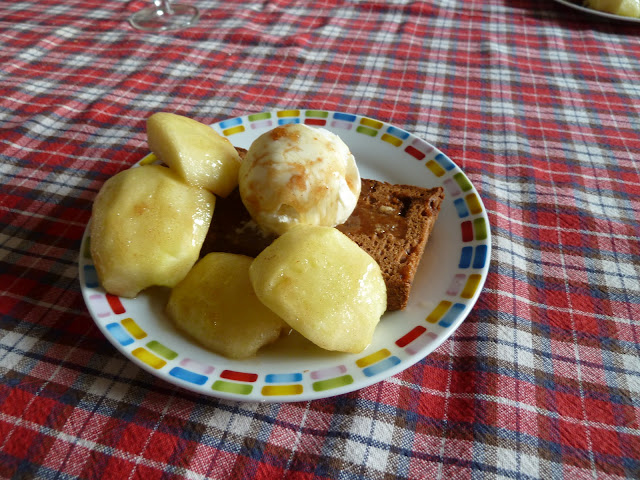When I
grew up, eating pasta wasn’t that common in the Netherlands. We had the
occasional spaghetti Bolognese every now and then, and that was it. The
Bolognese sauce came from a package: it contained a mysterious red powder that
only needed water to become sauce. As a child, I was amazed by this miracle.
But, of course, then I was a child and reasoned like a child. Growing up, I
made a firm resolution a few years back to get rid of the packages. No more
artificial flavors! And both my body and cooking are the better for it.
I’ve
made pasta with red sauce since my decision against package. But that was just
plain red sauce. It looked like what we got from the package but it tasted
loads better. Still, there is one thing… I haven’t had pasta Bolognese since!
Last summer, I brought back pasta from Italia, Tuscan pici. And the Tuscans always offer pici with ragù. Exactly: ragù the official name for Bolognese!
That was the invitation I needed to work on a time-consuming but basic Italian
dish. If a cheap restaurant in Buonconvento can do it, than so can I.
Making ragù (p. 61 of The Silver Spoon) turned out to be fun… chopping up onions, carrot,
celery and slowly cooking them. With every new step, new flavors ascend from
the pot on the stove. Be sure to pay attention when you add the garlic! And
after vegetables, water and wine you basically just wait for an hour and a
half. And then of course, the proof of the sauce is in the eating. First I
tried the sauce: so much deeper and richer than you’d expect from plain red
sauce as people name-call it! The freshness of the celery gives it a twist
quite unexpected for someone whose last Bolognese sauce came from a package.
The full-bodied flavor of the sauce lingers on the palate. For a second, I
wondered if the sauce needs pasta at all. But since I brought the pici all the way from Tuscany to the
rectory, here we go! I started out with one bundle of the pasta, since it cooks
for 22 minutes and I know it has quite a volume after that time. After tossing
the sauce and pasta together, I couldn’t resist the temptation to sprinkle some
grated Parmesan on top of it all. The pasta was just about done, with one or
two pieces still being a bit chalky. But all in all: it was bliss, especially
because the sun shone in my face as I was eating. How could I not be happy and
feel as if I was in Italy.
When measuring, don't forget how much larger the pici gets once it's cooked!
Two last
notes: if you get your hand on pici, use it. It is a thick pasta that can be
challenging to wrap around your fork. But remember that a knife was never meant
to cut pasta. You will hurt the feelings of generations of Italian cooks,
grandmothers and priests. Now you wouldn’t want to do that, would you? Second:
don’t worry about making too much sauce, it holds well in the freezer. Oh, and last but not least: always have grated Parmesan at hand when eating pasta!









